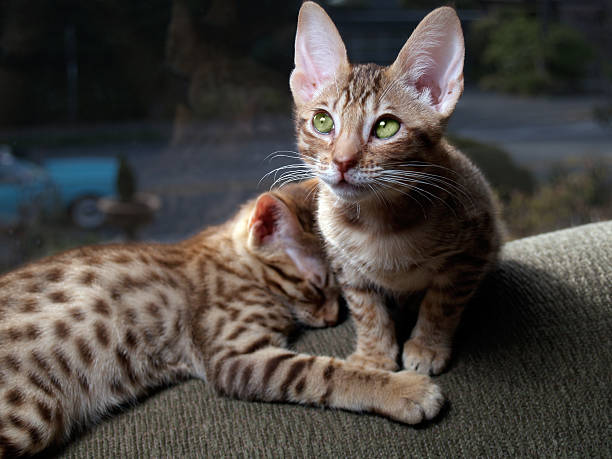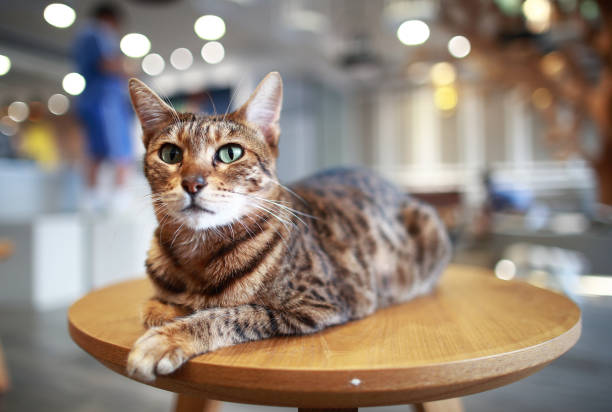Ocicat

History:
The Ocicat is a striking domestic breed developed in the 1960s in the United States. It was created by crossing Siamese, Abyssinian, and American Shorthair cats, aiming to produce a spotted coat resembling a wild ocelot, without any wild cat DNA. The breed was named after the ocelot due to its distinctive markings. The Ocicat was first recognised by cat registries in the 1980s and quickly gained popularity for its exotic appearance combined with a friendly and outgoing personality. Known as a sociable and intelligent cat, the Ocicat thrives in family environments and enjoys interactive play and companionship.
Size: Medium to large-sized cat
Height: 25–30 cm
Weight: 4–6.5 kg
Life Expectancy: 12 to 15 years

Breed Appearance:
Ocicats have a muscular, athletic build with a medium to large body. Their heads are wedge-shaped with a broad muzzle and large, expressive, almond-shaped eyes that are often gold, green, or copper. The ears are medium-sized, slightly rounded at the tips, and set wide apart. Their short, sleek coat is smooth and dense, featuring a distinctive spotted pattern with clearly defined, round or oval spots arranged in rows on the body, legs, and tail. The coat colours range widely, including tawny, chocolate, cinnamon, blue, lavender, and fawn. The breed’s overall look is wild and exotic, but with a domestic temperament.
Health & Care:
Ocicats are generally healthy and robust with few breed-specific health issues. Regular veterinary care, including vaccinations, dental hygiene, and a balanced diet, is important to maintain their well-being. Their short coat requires minimal grooming—weekly brushing helps remove loose hair and keep their coat shiny. Ocicats are active and intelligent, needing regular mental stimulation and physical exercise to prevent boredom and maintain a healthy weight.

Living Conditions:
Ocicats adapt well to various living environments, including apartments and houses, as long as they have enough space to play and explore. They are social, outgoing, and affectionate cats that enjoy interaction with their human families and often get along well with children and other pets. Their playful and curious nature means they appreciate toys, climbing structures, and puzzle feeders to keep them engaged.
Grooming:
With their short, smooth coat, Ocicats require minimal grooming. Weekly brushing is usually sufficient to keep their fur healthy and reduce shedding. Basic grooming routines like nail trimming, ear cleaning, and dental care should be maintained regularly. Bathing is rarely needed. Their easy-care coat makes them suitable for owners seeking a low-maintenance yet strikingly beautiful cat.

Advantages:
-
Ocicats are friendly, outgoing, and highly social, thriving on interaction with their families.
-
Their wild-looking spotted coat is unique and eye-catching without wild ancestry.
-
They are intelligent and playful, enjoying games, puzzles, and active play.
-
The breed adapts well to multi-pet households and is generally good with children.
-
Low grooming needs make them ideal for owners who want a beautiful but easy-care cat.
Disadvantages:
-
Their high energy and social nature mean they can become bored or restless without sufficient interaction.
-
Ocicats may be vocal and demand attention at times.
-
They can be quite curious and may get into mischief if not properly stimulated.
-
Because of their active personality, they require regular playtime and mental challenges.
-
Some individuals may be wary of strangers initially, but usually warm up quickly.

